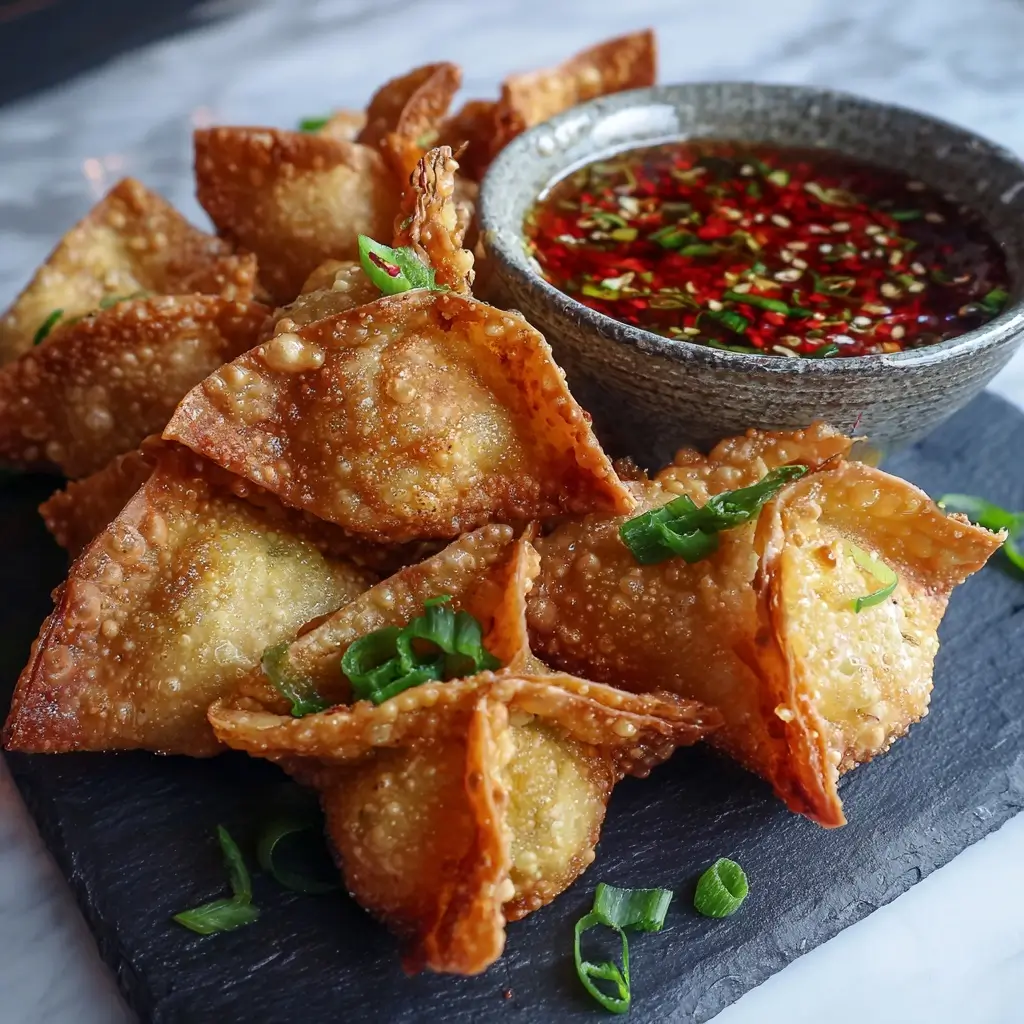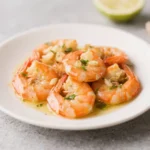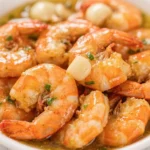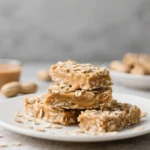Irresistible Rice Paper Crab Rangoons for a Perfect Snack
The History
Crab Rangoon is one of the most beloved appetizers in American-Chinese cuisine, often found on the menus of Chinese-American restaurants across the United States. Despite its widespread popularity, Crab Rangoon is not an authentic Chinese dish; rather, it’s a creative fusion born in mid-20th century American kitchens. The exact origins are murky, but many credit the Polynesian-themed restaurant chain Trader Vic’s with popularizing the dish in the 1950s. Named after the former capital of Burma (now Yangon), the exotic-sounding name was likely chosen to evoke a sense of tropical mystery and faraway flavors.
Traditionally, Crab Rangoons are made with wonton wrappers filled with a creamy mixture of crab meat, cream cheese, green onions, and seasonings, then deep-fried until golden. Over the decades, this indulgent snack has evolved. Today’s health-conscious food lovers are reimagining the classic recipe using lighter ingredients and alternative cooking techniques—leading to innovations like the Rice Paper Crab Rangoon. This version swaps out fried wonton skins for delicate rice paper wrappers, offering a crisp yet light texture with significantly fewer calories and no deep frying. It’s a refreshing twist that maintains all the flavor while embracing modern culinary trends focused on freshness and balance.
Ingredients Breakdown
The magic of Rice Paper Crab Rangooons lies in their harmonious blend of textures and flavors, achieved through carefully selected ingredients:
- Imitation or Real Crab Meat: Flaked crab is the star ingredient, providing a sweet, tender seafood essence. Imitation crab (surimi) is more affordable and widely available, though real lump crab meat elevates the dish for special occasions.
- Cream Cheese: Full-fat cream cheese adds richness and binds the filling together. For a lighter option, reduced-fat cream cheese works well without sacrificing too much creaminess.
- Green Onions: Finely chopped scallions add a mild oniony bite and vibrant color, enhancing both flavor and presentation.
- Garlic: A small amount of minced garlic intensifies the savory depth without overpowering the delicate crab.
- Soy Sauce or Tamari: Adds umami and a subtle saltiness. Use tamari for a gluten-free version.
- Sesame Oil: Just a few drops infuse the filling with an aromatic, nutty fragrance characteristic of Asian cuisine.
- Rice Paper Wrappers: Made from rice flour, water, and salt, these translucent sheets become pliable when soaked in water and form a delicate, slightly chewy shell when assembled. They’re naturally gluten-free and vegan.
- Lettuce Leaves (optional): Used as a base for serving, they add crunch and freshness.
- Garnishes: Fresh cilantro, toasted sesame seeds, or thinly sliced red chili can be used to elevate both taste and visual appeal.
- Dipping Sauces: Sweet chili sauce, plum sauce, or a homemade sriracha-lime mayo complement the rangoons beautifully.
This ingredient list strikes a perfect balance between indulgence and lightness, making these rangoons suitable for gatherings, cocktail parties, or even a guilt-free afternoon snack.
Step-by-Step Recipe
- Prepare the Filling: In a medium mixing bowl, combine 8 oz of flaked crab meat, 4 oz of softened cream cheese, 2 finely chopped green onions, 1 clove of minced garlic, 1 tsp soy sauce, and ½ tsp sesame oil. Mix gently until well blended. Be careful not to overmix, which could break down the crab meat. Taste and adjust seasoning if needed. Chill the mixture for 15–20 minutes to firm it up, making it easier to handle.
- Soak the Rice Paper: Fill a large shallow dish or pie plate with warm water. Take one rice paper wrapper and submerge it completely for about 10–15 seconds until it becomes soft and pliable. Carefully remove and lay it flat on a clean, damp kitchen towel or cutting board. It will continue to soften as it rests.
- Fill and Fold: Place 1 tablespoon of the crab mixture near the bottom third of the wrapper. If desired, place a small piece of lettuce leaf underneath for added crunch. Begin folding: fold the bottom edge over the filling, then fold in the left and right sides like an envelope, and finally roll upward tightly to seal. The rice paper will become slightly sticky, helping it adhere.
- Repeat the Process: Continue assembling the remaining rangoons, keeping unused rice papers covered with a damp cloth to prevent drying. Work one at a time, as rice paper hardens quickly once exposed to air.
- Chill Before Serving: Arrange the finished rangoons on a platter and cover with a lightly damp paper towel. Refrigerate for 15 minutes. This helps them set and improves texture.
- Garnish and Serve: Just before serving, sprinkle with chopped cilantro, toasted sesame seeds, or a slice of red chili for color and heat. Serve chilled with your favorite dipping sauce on the side.
Tips
- Don’t Over-Soak the Rice Paper: Too much water makes the wrapper fragile and difficult to roll. Aim for just enough softness to bend without cracking.
- Keep Hands Damp: Lightly wet your fingers when handling the rice paper to prevent sticking.
- Use Fresh Ingredients: Fresh green onions, real garlic, and high-quality crab meat make a noticeable difference in flavor.
- Work Quickly: Assemble the rangoons shortly before serving to maintain the best texture. If left too long, the rice paper may dry out or become tough.
- Double Wrap for Extra Strength: If you find the rice paper too thin or prone to tearing, consider using two layers for sturdier rolls.
- Vary the Shape: Instead of traditional rolls, try folding into triangles or spring roll-style packets for visual variety.
- Prep Ahead: You can prepare the filling up to a day in advance and store it in an airtight container in the refrigerator.
Variations and Customizations
The beauty of Rice Paper Crab Rangoons lies in their versatility. Here are some delicious twists to inspire creativity:
- Shrimp Rangoons: Replace crab with finely chopped cooked shrimp for a similar but distinctively brinier flavor.
- Vegan Version: Use hearts of palm or shredded king oyster mushrooms instead of crab, and swap cream cheese for a plant-based alternative. Add a pinch of kelp granules for a seafood-like umami boost.
- Spicy Kick: Mix in a teaspoon of sriracha or chili garlic paste into the filling, or garnish with sliced jalapeños.
- Tropical Twist: Add finely diced mango or pineapple for a sweet and tangy contrast that pairs wonderfully with the creamy filling.
- Herb-Infused: Stir fresh herbs like mint, Thai basil, or dill into the filling for a bright, aromatic lift.
- Baked Option: For a hybrid approach, lightly brush assembled rangoons with oil and bake at 375°F (190°C) for 8–10 minutes for a crispier texture.
- Deconstructed Style: Serve the crab mixture as a dip with rice paper chips or lettuce cups for a fun, interactive appetizer.
Health Considerations and Nutritional Value
Rice Paper Crab Rangoons offer a significantly healthier alternative to traditional fried versions. By eliminating deep frying and using rice paper, you cut down on saturated fat and excess calories. Here’s a nutritional comparison per serving (approximately 3 rangoons):
| Nutrient | Traditional Fried Rangoon | Rice Paper Rangoon |
|---|---|---|
| Calories | 220–260 | 130–160 |
| Total Fat | 14–18g | 6–8g |
| Saturated Fat | 5–7g | 3–4g |
| Carbohydrates | 18–22g | 12–15g |
| Protein | 6–8g | 7–9g |
| Sodium | 400–500mg | 300–380mg |
The rice paper version is naturally lower in fat and calories while still delivering satisfying protein and flavor. Additionally, rice paper is gluten-free and vegan-friendly (when used with appropriate fillings), making these rangoons suitable for various dietary needs. To further enhance the health profile, use low-sodium soy sauce, increase the proportion of vegetables, and serve with a yogurt-based or fruit-based dipping sauce.
Ingredients
- 8 oz imitation or real crab meat, flaked
- 4 oz cream cheese, softened (full-fat or reduced-fat)
- 2 green onions, finely chopped
- 1 clove garlic, minced
- 1 tsp soy sauce or tamari
- ½ tsp sesame oil
- 12–15 rice paper wrappers (approx. 7-inch diameter)
- 1 cup warm water (for soaking)
- Optional: butter lettuce leaves, for base
- Fresh cilantro, toasted sesame seeds, red chili slices (for garnish)
- Dipping sauces: sweet chili sauce, plum sauce, or sriracha mayo
Directions
- In a bowl, mix crab meat, cream cheese, green onions, garlic, soy sauce, and sesame oil until smooth. Chill for 15–20 minutes.
- Pour warm water into a shallow dish. Soak one rice paper wrapper at a time for 10–15 seconds until soft.
- Lay the softened wrapper flat on a damp surface. Place a lettuce leaf (if using) and 1 tablespoon of filling near the bottom edge.
- Fold the bottom edge over the filling, tuck in the sides, and roll up tightly into a neat package.
- Place seam-side down on a serving tray. Repeat with remaining wrappers and filling.
- Cover with a damp paper towel and refrigerate for 15 minutes to firm up.
- Garnish with cilantro, sesame seeds, or chili. Serve chilled with dipping sauce.
FAQ
Q: Can I make Rice Paper Crab Rangoons ahead of time?
A: Yes, but best results come from assembling them within a few hours of serving. Store them covered in the fridge with a damp towel to prevent drying.
Q: Are rice paper wrappers gluten-free?
A: Most rice paper wrappers are gluten-free, but always check the label to ensure no cross-contamination or added wheat starch.
Q: Can I freeze these rangoons?
A: Freezing is not recommended as the rice paper becomes brittle and the filling may separate upon thawing.
Q: What can I use instead of cream cheese?
A: Greek yogurt, mascarpone, or vegan cream cheese can be substituted, though texture and flavor will vary slightly.
Q: Why are my rice paper wrappers cracking?
A: They may be too dry or not soaked long enough. Keep them covered with a damp cloth and work in a humid environment if possible.
Q: Can I bake or air-fry these?
A: While traditionally served fresh, you can lightly brush with oil and air-fry for 3–4 minutes for a crispier texture, though this changes the delicate nature of the dish.
Summary
Irresistible Rice Paper Crab Rangoons offer a fresh, light, and flavorful twist on a classic American-Chinese favorite—perfect for health-conscious snackers and party hosts alike.
With a creamy crab filling wrapped in delicate rice paper, these no-cook delights are easy to assemble, visually stunning, and utterly delicious with every bite.










